Mister Brown has learned to say “NO!” to things he doesn’t want and the terrifying nail clippers are at the top of that list.
Why Dogs Fear Nail Clipping: Understanding the Root Cause
Dogs are known for their loyal and affectionate nature, and their owners often go to great lengths to ensure their pets are healthy and happy. However, one task that many pet parents dread is nail clipping. While some dogs are comfortable with the process, others are terrified of it. This can be a source of frustration for pet parents and can even lead to injuries for both the pet and the person performing the task. In this article, we will explore why dogs are scared of nail clipping and provide tips to help make the process less stressful for everyone involved.
Understanding Dogs and Nail Trimming
Dogs have a strong instinct to protect their paws, which is why many of them are resistant to having their nails clipped. Many dogs also have negative associations with nail clipping due to past experiences that may have caused them pain or discomfort. Additionally, some dogs are simply more sensitive to touch than others, which can make the process even more challenging.
Key Takeaways:
- Dogs can be scared of nail clipping due to a variety of reasons, including negative past experiences and sensitivity to touch.
- Proper holding techniques and desensitization can help make the process less stressful for dogs.
- Rewarding dogs for good behavior during nail clipping can help create positive associations with the process.
Understanding Dogs and Nail Trimming
Nail trimming is an essential part of dog grooming, but it can be a stressful experience for both dogs and their owners. Many dogs are scared of nail clipping, and this fear can range from mild discomfort to outright terror. Understanding why dogs are afraid of nail trimming can help owners take steps to make the experience less stressful for their furry companions.
One reason why dogs may be scared of nail trimming is that it can cause pain or discomfort. If the nail clippers are not used correctly, they can cut into the quick, which is the sensitive part of the nail that contains blood vessels and nerves. This can be painful for dogs and can cause bleeding. As a result, dogs may associate nail trimming with pain and discomfort, making them fearful of the process.
Another reason why dogs may be scared of nail trimming is that they may feel restrained or trapped during the process. Dogs are naturally sensitive to their environment, and if they feel that they are not in control, they may become anxious and fearful. This is especially true if the dog has had a negative experience with nail trimming in the past.
Long nails can also be a problem for dogs. If the nails are too long, they can become uncomfortable for the dog to walk on. In some cases, the nails can even curl around and grow into the paw pads, causing pain and infection. This can make dogs even more fearful of nail trimming, as they associate it with discomfort and pain.
To help dogs overcome their fear of nail trimming, owners can take several steps. Using positive reinforcement, such as treats and praise, can help dogs associate nail trimming with positive experiences. Owners can also try to make the process less stressful by trimming the nails in smaller increments, rather than all at once. Finally, using the right type of nail clippers can help reduce the risk of pain or discomfort during the process.
Overall, understanding why dogs are scared of nail trimming can help owners take steps to make the process less stressful for their furry companions. By using positive reinforcement and taking the right precautions, owners can help their dogs overcome their fear of nail trimming and keep their nails healthy and comfortable.
The Anatomy of a Dog’s Paw
Understanding the anatomy of a dog’s paw is essential for dog owners to take care of their pet’s paws properly. A dog’s paw consists of several parts, including the paw pads, toes, nails, and joints. Each part plays a crucial role in the dog’s ability to walk, run, and play.
The paw pads are the thick, cushioned, and flexible skin on the bottom of the dog’s paw. They provide shock absorption and protect the bones and joints from injury. The paw pads also help the dog maintain traction and stability on different surfaces.
The toes on a dog’s paw are similar to human fingers and toes. They are made up of bones, joints, muscles, and ligaments. The toes help the dog balance and grip objects. Each toe has a nail that grows continuously and needs to be trimmed regularly.
The joints on a dog’s paw connect the bones and allow the paw to move. They are vulnerable to arthritis, which is a common condition in older dogs. Arthritis can cause pain, swelling, and stiffness in the joints, making it difficult for the dog to walk and run.
Dog owners should be aware of the signs of arthritis and take steps to prevent it. Regular exercise, a healthy diet, and joint supplements can help keep a dog’s joints healthy.
In conclusion, understanding the anatomy of a dog’s paw is crucial for dog owners to take care of their pet’s paws properly. Each part of the paw plays a vital role in the dog’s ability to move and stay active. By taking care of their pet’s paws, dog owners can ensure their dog’s overall health and well-being.
Why Dogs Fear Nail Clippers
Nail clipping is an essential part of dog grooming, but many dogs are scared of it. Here are some reasons why dogs fear nail clippers:
Pain and Discomfort
Using the wrong type of nail clippers can cause pain and discomfort to dogs. The guillotine type of nail clippers is not recommended because it can crush the nail and cause pain. Scissor-type nail clippers are more recommended because they cut the nail cleanly without causing any pain.
Fear of the Unknown
Dogs can be scared of nail clippers because they are unfamiliar with them. They may have never seen them before or may have had a bad experience with them in the past. It is essential to introduce nail clippers to dogs gradually and positively.
Trauma
Dogs can develop a fear of nail clippers if they have had a traumatic experience with them in the past. For example, if a dog’s nail was accidentally cut too short, causing pain and bleeding, the dog may develop a fear of nail clippers.
Anxiety and Panic
Some dogs are naturally anxious and fearful, and nail clipping can trigger their anxiety and panic. It is essential to approach nail clipping with patience and understanding, taking breaks if necessary, and rewarding the dog for good behavior.
Lack of Trust
Dogs need to trust their owners to feel safe and secure during grooming. If a dog does not trust their owner, they may become fearful and anxious during nail clipping. Building trust with a dog takes time and patience, and it is essential to approach nail clipping with a calm and reassuring demeanor.
Overall, there are many reasons why dogs can be scared of nail clippers. It is essential to approach nail clipping with patience, understanding, and a gentle touch to help dogs overcome their fear and feel safe and secure during grooming.
The Role of the Vet and Professional Groomers
When it comes to nail clipping, both veterinarians and professional groomers play an important role in ensuring the health and well-being of dogs. Although both professions have similar goals, there are some differences in their approach to nail clipping.
A veterinarian is a trained medical professional who has graduated from a 4-year program in veterinary medicine. Vets are highly knowledgeable in various sciences and must have a good deal of formal experience in order to diagnose and treat various medical conditions in animals. However, while vets are trained to provide basic grooming services, such as nail clipping, their primary focus is on animal health and medical care.
On the other hand, professional groomers specialize in grooming services, including nail clipping. They are trained to provide a variety of grooming services, including bathing, haircuts, and nail trimming. Professional groomers often work in pet salons, mobile grooming vans, or as independent contractors.
When it comes to nail clipping, both vets and groomers can provide valuable services to dogs and their owners. However, it’s important to choose a professional who is experienced and knowledgeable in the specific grooming service you need. For example, if your dog has a medical condition that requires special attention, it may be best to consult with a veterinarian before having their nails clipped.
In summary, both veterinarians and professional groomers play an important role in ensuring the health and well-being of dogs. While vets focus primarily on animal health and medical care, professional groomers specialize in grooming services, including nail clipping. When choosing a professional to provide grooming services for your dog, it’s important to choose someone who is experienced and knowledgeable in the specific service you need.
The Importance of Proper Holding Techniques
Proper holding techniques are crucial when it comes to nail clipping for dogs. Dogs can easily become scared or anxious during the process, and improper holding can make the experience even worse for them. By using the right holding techniques, owners can help their dogs feel more comfortable and secure, making the process easier for both the dog and the owner.
When holding a dog for nail clipping, it is important to maintain good posture. This means standing or sitting up straight, with your shoulders relaxed and your back straight. This will help you maintain control and balance over your dog, and will also help prevent back or neck strain.
In addition to good posture, it is important to hold your dog in a way that makes them feel secure and comfortable. This can vary depending on the size and temperament of your dog, but some general tips include:
- Hold your dog close to your body, with their head facing away from you.
- Use your non-dominant hand to hold their paw and gently extend their nails.
- Use your dominant hand to hold the clippers and trim the nails.
- Use a gentle but firm grip to keep your dog still and prevent them from pulling away.
By using these techniques, owners can help their dogs feel more secure and comfortable during nail clipping. This can help reduce anxiety and fear, making the process easier and less stressful for everyone involved.
Dealing with the Quick
One of the reasons dogs may be scared of nail clipping is the fear of hitting the quick. The quick is the blood supply within a nail, and if it is clipped, it will bleed and cause discomfort to the dog. It is essential to know where the quick is located to avoid hitting it during nail clipping.
For dogs with light-colored nails, the quick is easier to spot as it appears as a pinkish area in the center of the nail. However, for dogs with dark nails, it can be challenging to locate the quick. In such cases, it is recommended to trim small portions of the nail at a time to avoid hitting the quick.
If the quick is accidentally clipped, it is essential to have styptic powder on hand. Styptic powder is a clotting agent that can be applied to the nail to stop the bleeding. It is crucial to apply the styptic powder immediately after the nail is clipped to help stop the bleeding.
In addition to being cautious while clipping the nails, it is also essential to desensitize the dog to nail clipping. This can be done by gradually introducing the dog to the clippers and rewarding them for good behavior. Patience is key when desensitizing a dog to nail clipping, and the process cannot be rushed.
Overall, understanding the location of the quick, having styptic powder on hand, and desensitizing the dog to nail clipping can help alleviate the fear and anxiety associated with nail clipping.
Desensitizing Dogs to Nail Trimming
Desensitizing a dog to nail trimming can be a slow and gradual process, but it is an effective way to help dogs overcome their fear of nail clipping. The goal is to make nail trimming a positive experience for the dog, and to gradually increase their tolerance for the procedure.
One way to desensitize a dog to nail trimming is to start by simply touching their paws and nails. Give the dog a treat every time you touch their paw or nail, and gradually increase the amount of time you touch their paw or nail. This will help the dog get used to the sensation of having their paws and nails touched, and associate it with positive experiences.
Another way to desensitize a dog to nail trimming is to gradually introduce them to the tools used for nail trimming. Start by placing the nail clippers or grinder on the ground and letting the dog investigate and sniff them. Give the dog a treat every time they show interest in the tools. Gradually move the tools closer to the dog, always rewarding them with a treat for positive behavior.
Once the dog is comfortable with the tools, the next step is to simulate the sound of nail trimming. Clip a piece of dry pasta near the dog’s nail to simulate the sound of a nail being clipped, and reward the dog with a treat for positive behavior. Gradually increase the volume of the sound, always rewarding the dog for positive behavior.
As the dog becomes more comfortable with the process, gradually introduce them to the actual nail trimming procedure. Start by trimming just one nail, and reward the dog with a treat for positive behavior. Gradually increase the number of nails trimmed in each session, always rewarding the dog for positive behavior.
Consistency is key when desensitizing a dog to nail trimming. Make nail trimming a regular part of the dog’s routine, and always reward positive behavior. With patience and persistence, most dogs can overcome their fear of nail clipping and learn to tolerate the procedure.
Reward System for Nail Trimming
One effective way to help dogs overcome their fear of nail clipping is by implementing a reward system. Dogs respond well to positive reinforcement, and incorporating treats and rewards into the nail trimming process can make it a more positive experience for them.
When introducing a reward system, it’s important to start slow and gradually build up to a full nail trimming session. Begin by simply showing your dog the nail clippers and giving them a treat. This will help them associate the clippers with something positive.
Next, try touching your dog’s paw with the clippers and immediately giving them a treat. Repeat this process several times, gradually increasing the amount of time the clippers are in contact with their paw.
Once your dog is comfortable with the clippers touching their paw, you can move on to actually clipping their nails. Start with just one nail and immediately give them a treat afterwards. Gradually increase the number of nails you clip during each session, always rewarding your dog afterwards.
It’s important to choose appropriate treats for your dog during the nail trimming process. Treats that take a long time to eat, such as frozen peanut butter or a stuffed Kong, can be especially effective in keeping your dog occupied and distracted while you trim their nails.
In addition to treats, verbal praise and petting can also be effective rewards for dogs during nail trimming. Using a calm and reassuring tone of voice can help your dog feel more relaxed and comfortable during the process.
Overall, implementing a reward system can be an effective way to help dogs overcome their fear of nail clipping. By using positive reinforcement and gradually building up to a full nail trimming session, you can help your dog associate the process with something positive and make it a more comfortable experience for them.
Choosing the Right Nail Clippers
When it comes to nail clipping, choosing the right nail clipper is essential. There are two main styles of nail clippers: scissor type and guillotine type. It is important to choose the right type of clipper for your dog, as using the wrong type can cause pain and discomfort.
Scissor type nail clippers are the most common type and are suitable for most dogs. They work by cutting the nail in a scissor-like motion, which allows for more control and precision. Scissor type clippers are also less likely to cause discomfort or pain, making them a good choice for dogs who are scared of nail clipping.
Guillotine type nail clippers, on the other hand, work by inserting the nail into a small hole and then squeezing the handles to cut the nail. While guillotine type clippers can be effective for some dogs, they can also be more difficult to use and can cause pain if not used correctly.
When choosing nail clippers, it is also important to consider the size and shape of your dog’s nails. Small dogs with thin nails may require smaller clippers, while larger dogs with thicker nails may require larger, more heavy-duty clippers.
Overall, choosing the right nail clippers is essential for a successful and stress-free nail clipping experience. By selecting the right type and size of clipper, you can help ensure that your dog’s nails are trimmed safely and comfortably.
Alternative to Nail Clippers: Nail Grinder
For some dogs, nail clippers can be a source of fear and anxiety. Fortunately, there is an alternative to traditional nail clippers that may be more comfortable for your furry friend: a nail grinder.
A nail grinder is a tool that uses a small rotating file to gradually grind down your dog’s nails. This can be a more gentle and less intimidating process than using clippers, especially for dogs who are nervous about having their paws handled.
When choosing a nail grinder, it’s important to select one that is specifically designed for dogs. Human nail grinders may not be powerful enough to handle the thicker nails of a dog, and they may also be too loud or vibrate too much for your pet’s comfort.
There are a few different types of nail grinders available, including corded and cordless models. Cordless grinders can be more convenient for use on-the-go, but they may not be as powerful as corded models.
Using a nail grinder can take some practice, but with patience and a steady hand, it can be an effective way to keep your dog’s nails trimmed and healthy. Here are some tips for using a nail grinder:
- Introduce your dog to the grinder gradually, allowing them to sniff and investigate it before turning it on.
- Start with short sessions of just a few seconds at a time, gradually increasing the length of each session as your dog becomes more comfortable.
- Use a gentle touch and avoid grinding too close to the quick (the pink part of the nail that contains blood vessels and nerves).
- Offer plenty of treats and praise throughout the process to help your dog associate the grinder with positive experiences.
Overall, a nail grinder can be a great alternative to traditional nail clippers for dogs who are scared or anxious. With the right tool and a little patience, you can help keep your pet’s nails healthy and comfortable.
The Role of Pet Parents
Pet parents play a crucial role in helping their dogs overcome their fear of nail clipping. Here are some tips that can help:
1. Start Early
Pet parents should start introducing their puppies to nail clipping at an early age. This will help them get used to the process and reduce their fear of it. It is also important to ensure that the puppy’s vaccination schedule is up to date before starting nail clipping.
2. Desensitization
Pet parents can desensitize their dogs to nail clipping by gradually introducing them to the process. They can start by touching their dog’s paws and nails, and then move on to using a nail clipper or grinder. It is important to reward the dog after each successful session to reinforce positive behavior.
3. Use the Right Tools
Pet parents should use the right tools for nail clipping. Scissor-type nail clippers are recommended over guillotine-type clippers as they are less likely to cause pain or discomfort to the dog.
4. Seek Professional Help
If pet parents are unable to clip their dog’s nails themselves, they should seek professional help from a groomer or veterinarian. They can also get advice on nail care and grooming techniques from these professionals.
5. Stay Calm
Pet parents should remain calm and patient during the nail clipping process. Dogs can sense their owner’s anxiety and become more fearful themselves. It is important to use a calm and reassuring tone of voice and reward the dog for good behavior.
By following these tips, pet parents can help their dogs overcome their fear of nail clipping and ensure that their nails are properly maintained.
Top 10 Dog Videos Today
1.
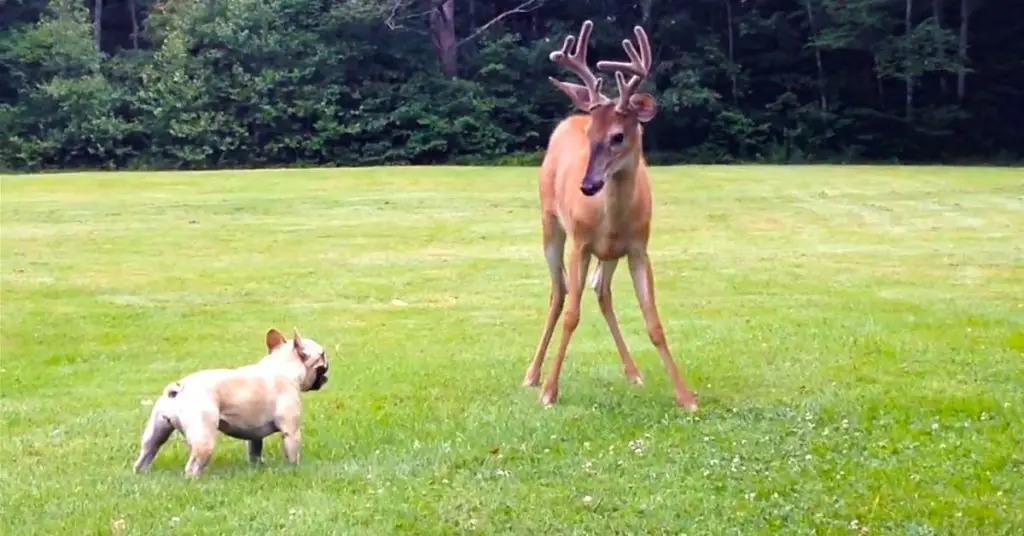 Wild Buck And French Bulldog Play A Game Of Chase In Backyard Ellie-Mae was playing with this buck for 30 minutes before this was recorded. They had so much fun. Can deer and dogs be friends? In ... Read more
Wild Buck And French Bulldog Play A Game Of Chase In Backyard Ellie-Mae was playing with this buck for 30 minutes before this was recorded. They had so much fun. Can deer and dogs be friends? In ... Read more2.
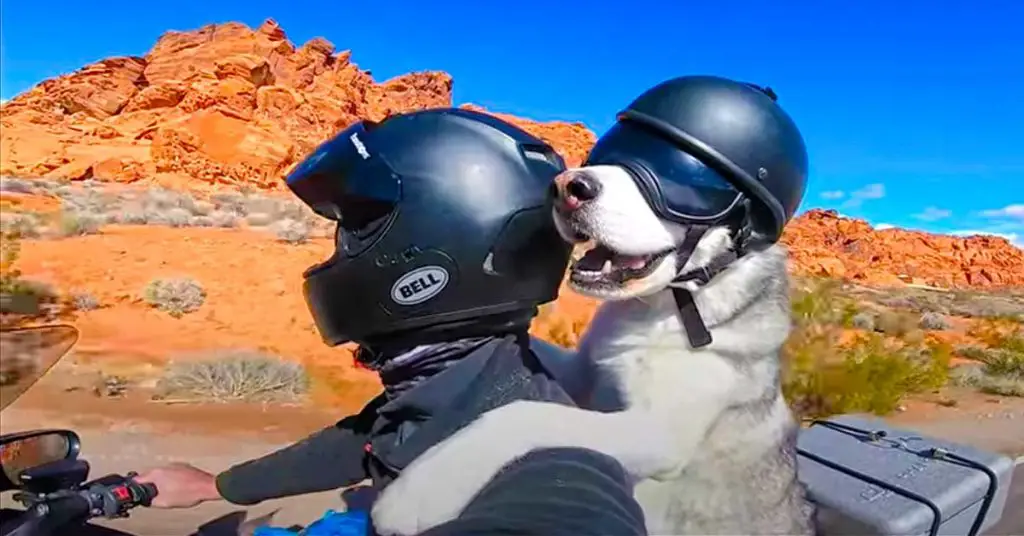 Dog Rides A Motorcycle With His Dad Through All 50 States Michael and his Husky Sox have such an adorable bond together. They are traveling together to see the country. Dedicated dads and their dogs have ... Read more
Dog Rides A Motorcycle With His Dad Through All 50 States Michael and his Husky Sox have such an adorable bond together. They are traveling together to see the country. Dedicated dads and their dogs have ... Read more3.
 Rescue Kanga-Dog Insists On Daily Couch Cuddles With Dad Rufus the couch kangaroo acts just like a dog and has so much personality. If you’re ever in Australia, be on the lookout for a ... Read more
Rescue Kanga-Dog Insists On Daily Couch Cuddles With Dad Rufus the couch kangaroo acts just like a dog and has so much personality. If you’re ever in Australia, be on the lookout for a ... Read more4.
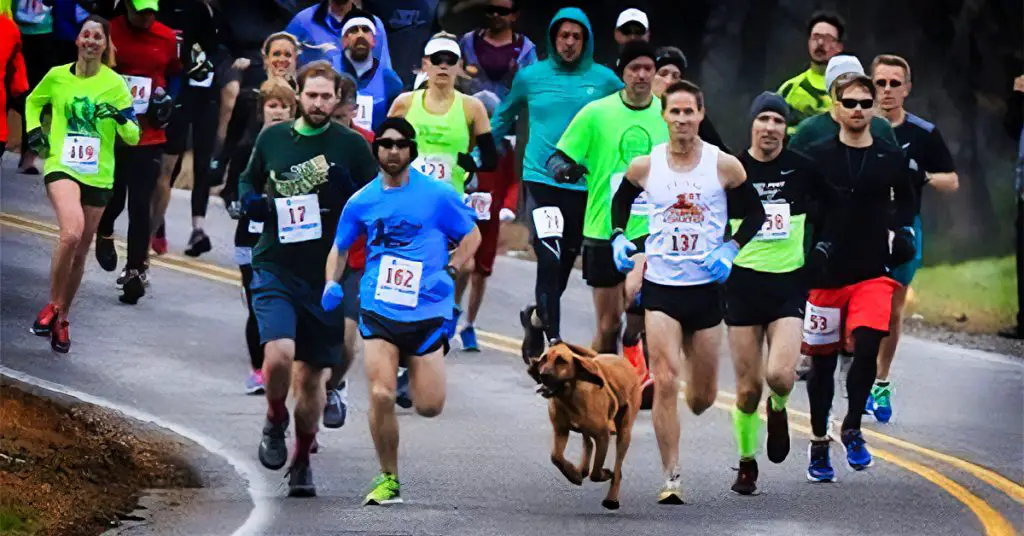 Bloodhound Was Let Out To Pee And Then Finishes 7th In Half Marathon Ludivine was let out to do her business on the farm like she normally does, but the noise from a nearby race caught her attention ... Read more
Bloodhound Was Let Out To Pee And Then Finishes 7th In Half Marathon Ludivine was let out to do her business on the farm like she normally does, but the noise from a nearby race caught her attention ... Read more5.
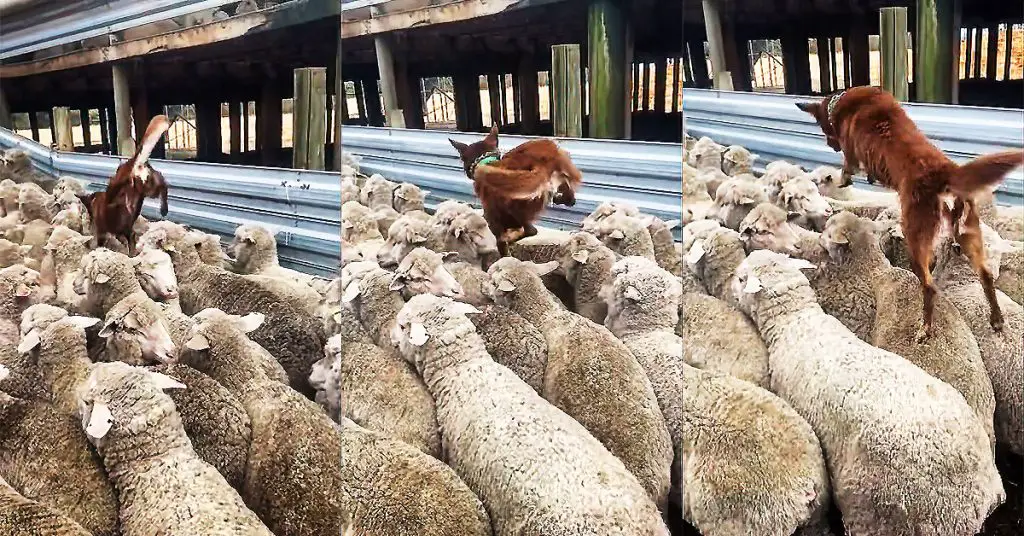 Hard-Working Sheep Dog Knows How To Get The Job Done Check out how this dog runs along the top of the sheep in order to herd them. Such a smart and hard-working pup! I love ... Read more
Hard-Working Sheep Dog Knows How To Get The Job Done Check out how this dog runs along the top of the sheep in order to herd them. Such a smart and hard-working pup! I love ... Read more6.
 Dog Jumps In Water To Rescue Drowning Cat This sweet dog jumped in the water and had the cat climb on his back to escape the water. Can dogs swim better than cats? ... Read more
Dog Jumps In Water To Rescue Drowning Cat This sweet dog jumped in the water and had the cat climb on his back to escape the water. Can dogs swim better than cats? ... Read more7.
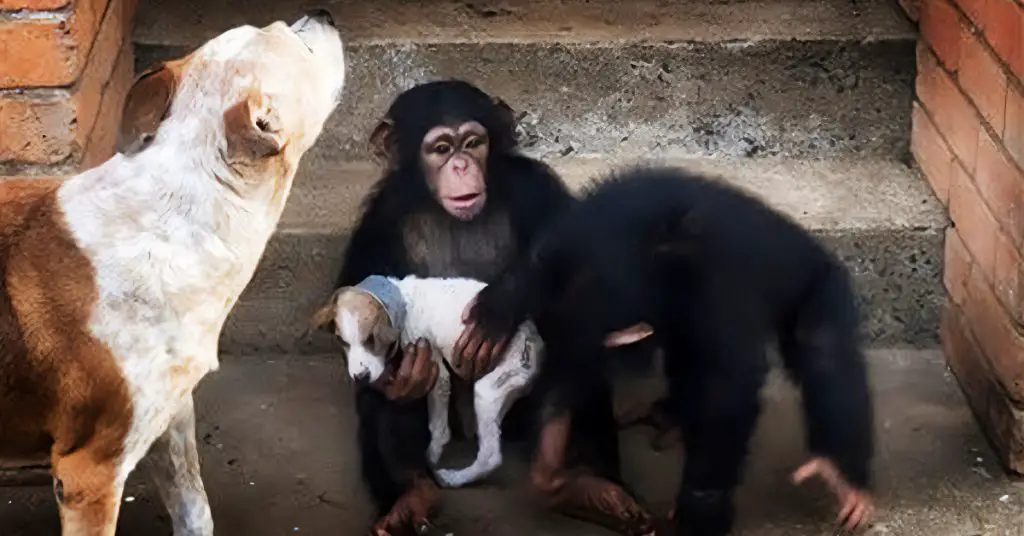 Dying Puppy Found On The Road Is Brought To A Chimpanzee Sanctuary And Nursed Back To Health The chimps give the puppy a lot of love and affection to help heal. Do chimps and dogs get along? Chimps and dogs are both ... Read more
Dying Puppy Found On The Road Is Brought To A Chimpanzee Sanctuary And Nursed Back To Health The chimps give the puppy a lot of love and affection to help heal. Do chimps and dogs get along? Chimps and dogs are both ... Read more8.
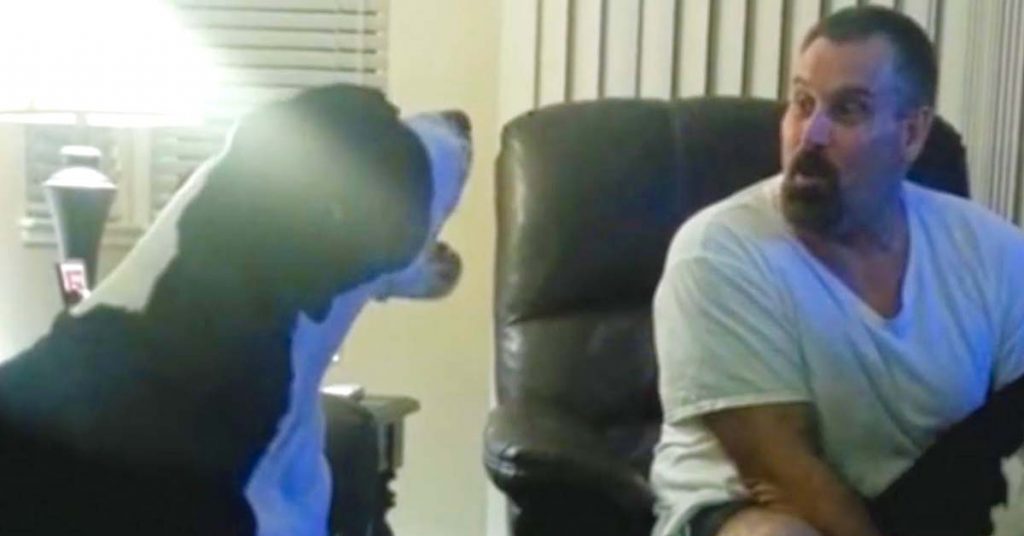 Spoiled Great Dane Throws a Hissy Fit Dinky the Great Dane sees his brother getting some scratches from his human and throws a tantrum. Dinky the Great Dane has always been a ... Read more
Spoiled Great Dane Throws a Hissy Fit Dinky the Great Dane sees his brother getting some scratches from his human and throws a tantrum. Dinky the Great Dane has always been a ... Read more9.
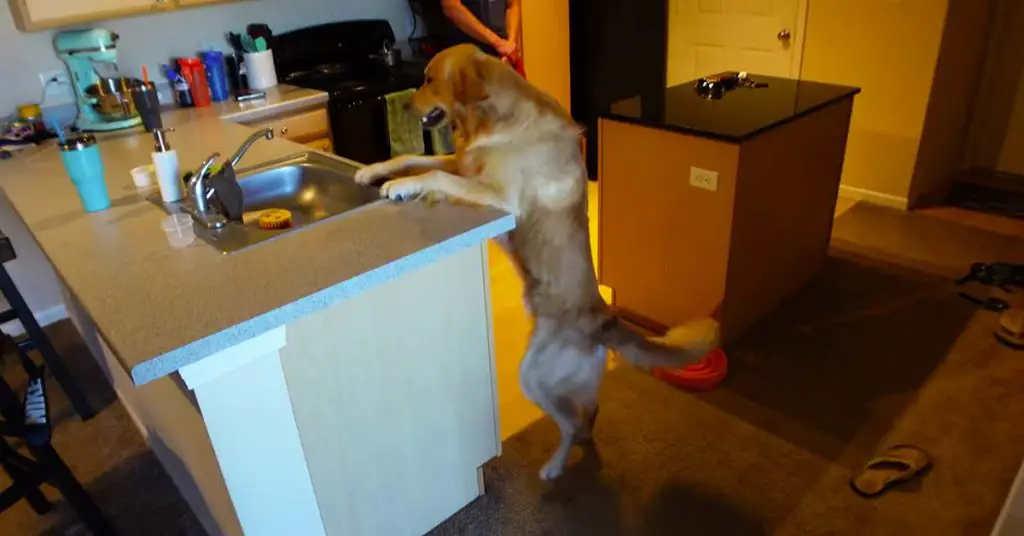 Dog Throws Tantrum When There’s No Dirty Dishes In Sink Wrangler wanted to lick the dishes in the sink, but there weren’t any so he protests. Is it ok for dogs to lick dishes? No, ... Read more
Dog Throws Tantrum When There’s No Dirty Dishes In Sink Wrangler wanted to lick the dishes in the sink, but there weren’t any so he protests. Is it ok for dogs to lick dishes? No, ... Read more10.
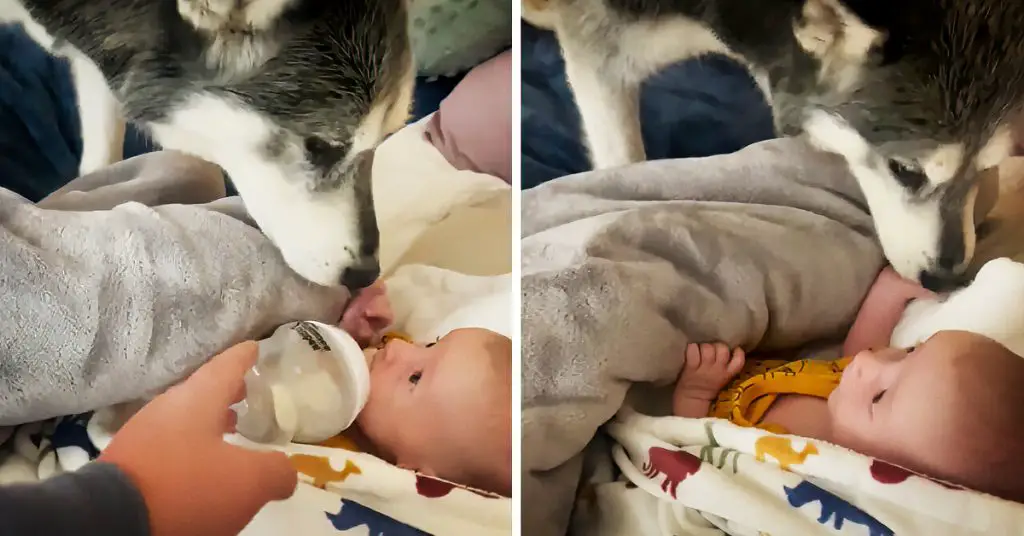 Loving Husky Gently Tucks In Newborn Baby This 9-year-old husky tucks in a newborn baby boy into bed. Are huskies very nurturing? Huskies are often considered to be one of the most ... Read more
Loving Husky Gently Tucks In Newborn Baby This 9-year-old husky tucks in a newborn baby boy into bed. Are huskies very nurturing? Huskies are often considered to be one of the most ... Read more